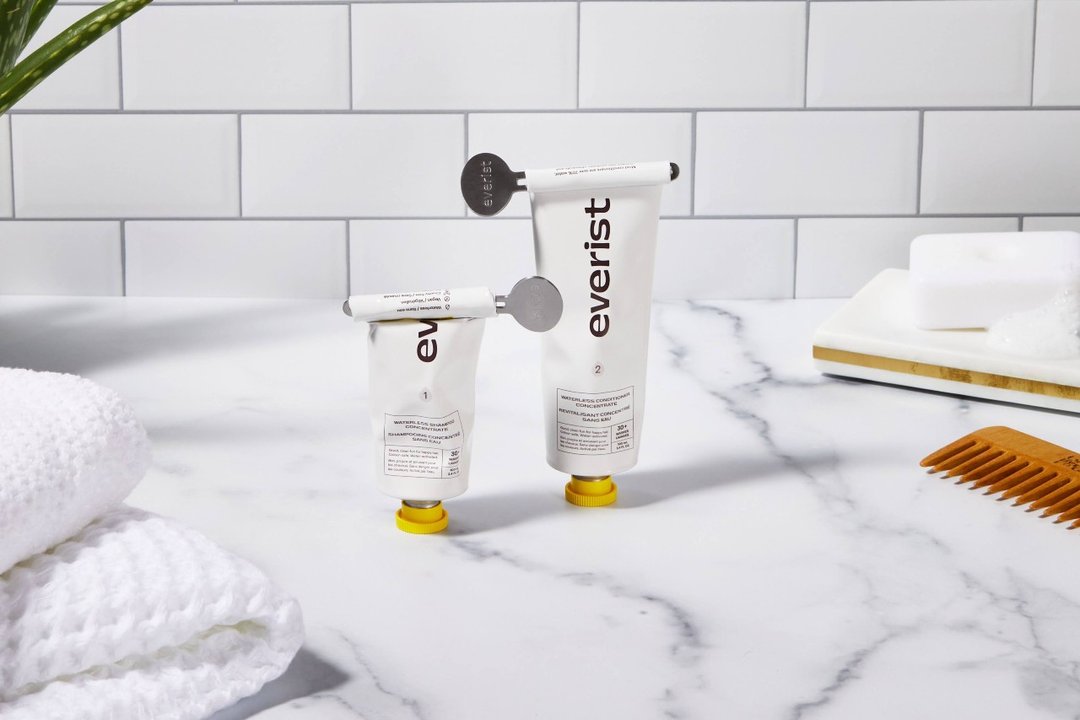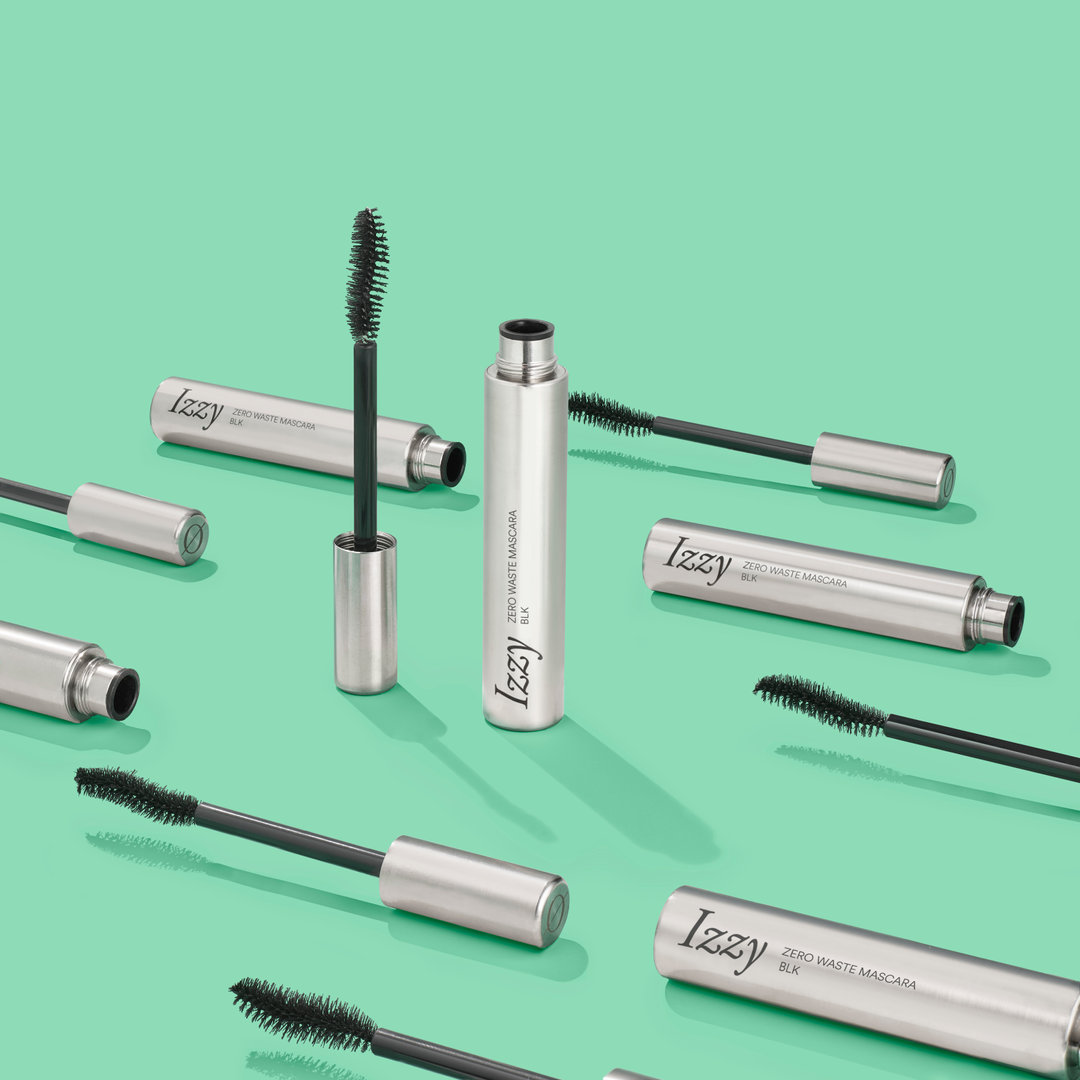Brands want you to send them old clothes and used packaging. Why?
Recycling schemes are becoming more common as brands start to take responsibility for what happens once consumers are done with their products.

Personal care brand Everist asks customers to send back its yellow plastic caps. (Photo: Everist)
CLOSING THE LOOP
Apparel brand For Days, known for its signature t-shirts, wants to know how it can get its clothes back from customers.
It started with a subscription program when it launched in 2018, where customers could send back their old t-shirts for recycling in exchange for new ones. Next, the subscription model was scrapped in favor of a credit system, where shoppers got money in their accounts whenever they sent an old For Days t-shirt back to the brand.
More recently, For Days has been rolling out a take-back scheme where people can send in clothes from any brand for recycling.
The question of what should happen to a product once consumers are done using it is becoming an increasingly urgent one for brands to answer. In Europe, rules are being pushed forward that would force manufacturers to make sure their products are easier to repair and recycle, while a new law in California demands that brands reduce their use of single-use plastic packaging by 25% over the next 10 years.
For Days is not the only brand that’s trying to get ahead of such regulations. U.K. running shoe brand Hylo accepts old trainers from any company for recycling, giving customers a £10 credit to say thank you. Underwear brands Parade and Knickey offer a similar service for lingerie products. Reformation works with new recycling firm SuperCircle to take back products, while TerraCycle is the chosen recycling partner of skincare brand Bubble.
These schemes focus on collecting as much old stuff as possible from people, often using discounts as an enticement. But what actually happens to those products once they are back in the brands’ hands?
What do brands do with the stuff you send back to them?
Getting such a returns scheme off the ground in the first place isn’t the easiest task, given that most supply chains are geared up for the making and selling of new products — not the disposing of old ones.
Shannon Goldberg says that her beauty brand, Izzy Zero Waste Beauty, spent 10 months in beta mode after launching in April 2021, in order to ensure its system for refilling customers’ empty mascara tubes actually worked. The challenges ranged from figuring out how to actually get the tubes back from customers to creating packaging that could be cleaned, sterilized and refilled safely. Goldberg says it took 13 tries to perfect the design of the brand's strainless steel mascara tubes, which can “be washed and refilled more than 10,000 times,” says Goldberg. The brushes are made from a plant-based resin which can be melted down and reformed into new brushes.
Izzy sells its range — which now includes lip products and brow gel — to customers via subscription. Every 90 days, they receive a replacement product and are asked to leave their empty tubes in the mailbox for collection.
“If you use the mascara once or twice a day, the tube should run out in 90 days,” Goldberg adds.
Compostable underwear brand Kent says it also took a few months after launching to get its end-of-life scheme set up. In October 2021, the brand launched a program called the Compost Club, giving customers who did not have access to composting facilities at home a way to dispose of the products responsibly. For $5 they can buy a kit from Kent that contains instructions on how to prep the pants for composting, plus a bag to return them in.
“A compost takeback program for fashion has never existed before, that I know of, so we had to create our own value chain to set that up,” says founder Stacy Anderson. “Because our products are compostable at the end of life, and designed to last a long time, we knew our customers wouldn’t need it right away.”
Anderson says the $5 fee for the composting kit covers the cost of shipping the products back to Kent — but that the brand takes on all the other costs associated with the scheme, such as the composting itself and the time staff spend sorting the returned items. Customers also get a $10 discount on future purchases when they buy the kit. “One of the main reasons why I wanted to start this brand was [because of] the massive amount of clothes in landfill,” she says, of the decision to help customers that don’t have their own home compost, and would otherwise have to put the pants in the bin. “I didn’t want our underwear to end up there — while it would disappear, it wouldn’t have the benefit of becoming compost.”

Izzy Zero Waste Beauty currently has around 3,000 people subscribed to its refill scheme. (Photo: Izzy Zero Waste Beauty)
How effective are these recycling schemes?
Brands say they feel compelled to set up their own recycling schemes because there aren’t many options available to consumers — a brand can access industrial composting facilities, for example, while a consumer will be stuck with whatever recycling services their local authority provides for them.
But even with their schemes set up, it can take young brands a long time to collect a large enough volume of waste to actually do something with. So far, Anderson says that “less than a dozen” Kent customers have sent their pants back for composting. Given the brand only launched in 2020, few customers may yet feel that it's time to dispose of the underwear.
Izzy, meanwhile, has around 3,000 members and is yet to start refilling tubes beyond the test runs it has already completed. “We’re still in collection mode, and no manufacturer will refill 3,000 [units]. They want to fill 10,000,” Goldberg explains. “So we need to collect 10,000 before we go through a [full] wash and refill.”
When shoppers order from hair care brand Everist, it sends them a cotton bag to save the plastic caps from its shampoos, conditioners and bodywashes. Once they have saved 10 caps, they can go back to the brand for recycling.
Everist's products last around four months on average; meaning a customer who uses all three of the brand’s current line of products would take over a year to collect 10 caps. “One of the things that’s been challenging is the return shipping,” says founder Jayme Jenkins, pointing out that if customers were to send back a cap at a time, that would rack up in terms of costs and unnecessary transport emissions. The brand plans to release more products this year, meaning “there’ll be more SKUs for people to add to their basket, and we anticipate more caps coming back as a result of that too.”
So far “several hundred” caps have been sent back through the program, and Jenkins says the goal is to collect enough to create a new product — perhaps a comb or other hair accessory — from the plastic saved.
Such schemes are still in their infancy, and will need to achieve scale in order to have a significant impact. Collecting as much waste from consumers as possible is a necessary first step, but more infrastructure will be needed to ensure those items can be recycled and materials used again. The brands Thingtesting spoke to all agreed that finding the right industry partners to support them in bringing their schemes to life has been among the biggest challenges.
Still, Jenkins says it’s right that the waste becomes the brand’s problem once a product is at the end of its life, rather than the consumer’s. “People are starting to think more about the waste that they’re creating in their own homes, and any ways that brands can make it easier for them to have a plan for that will be more convenient than having to figure out what to do [themselves].”